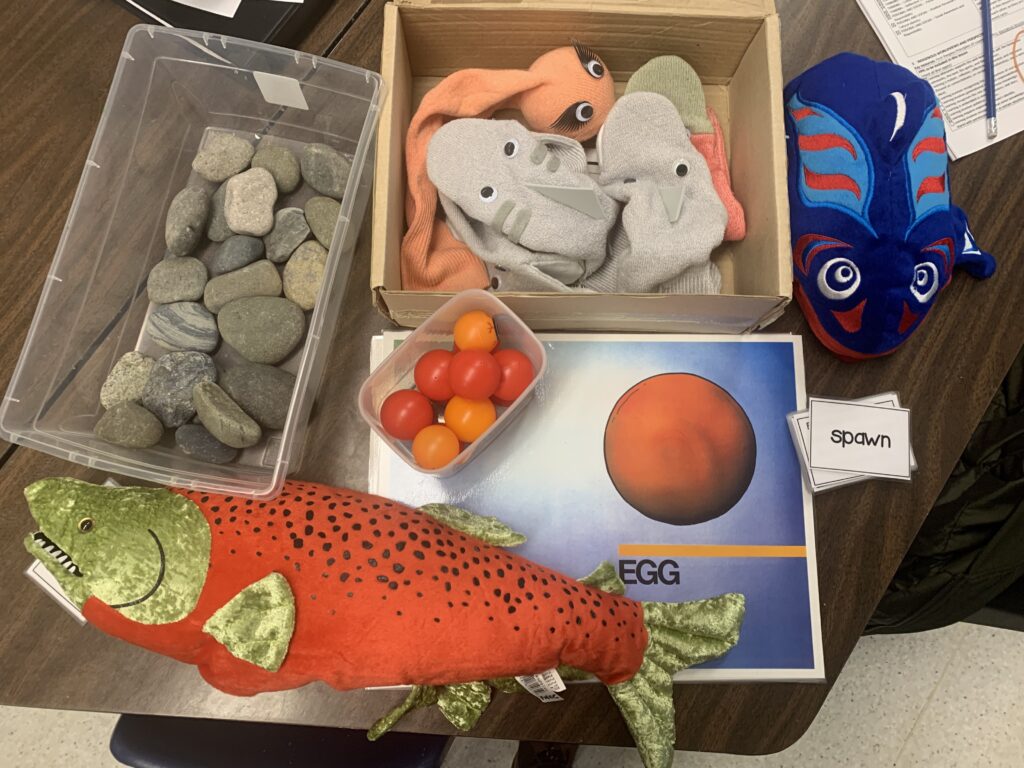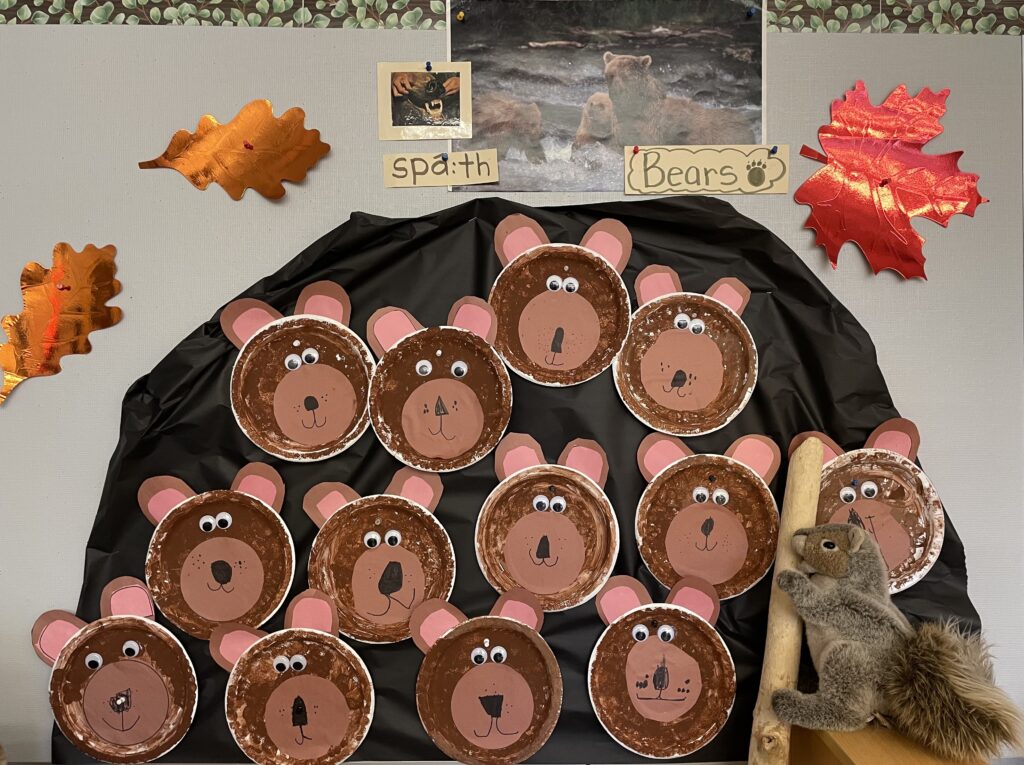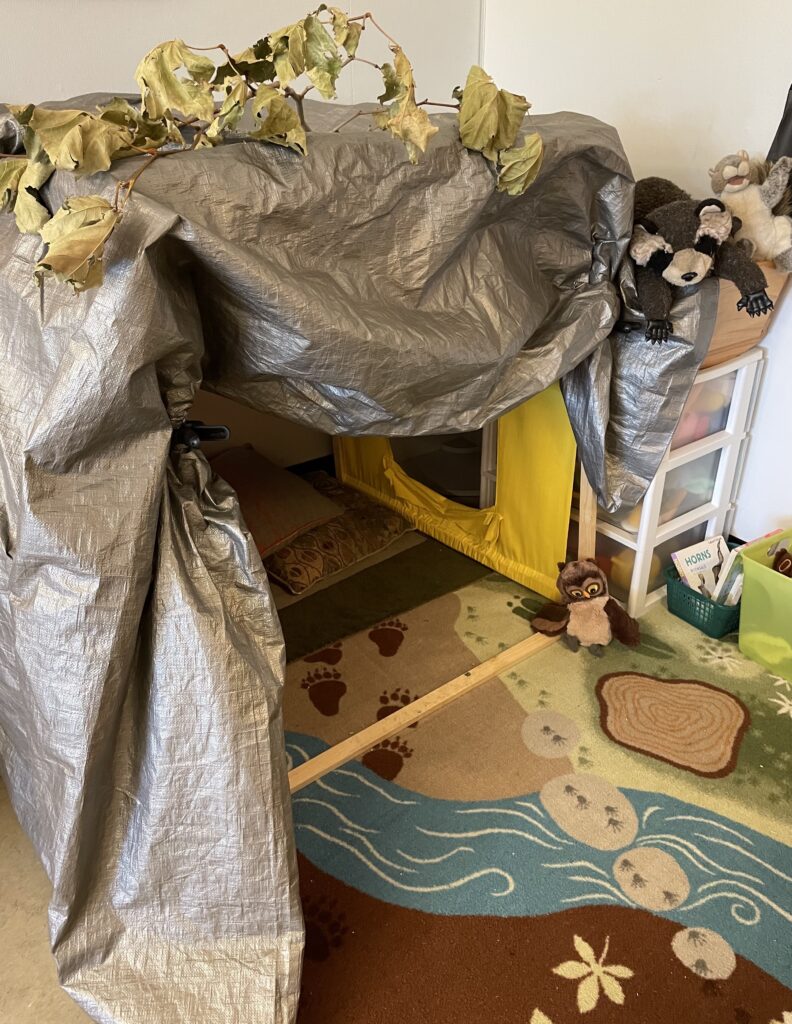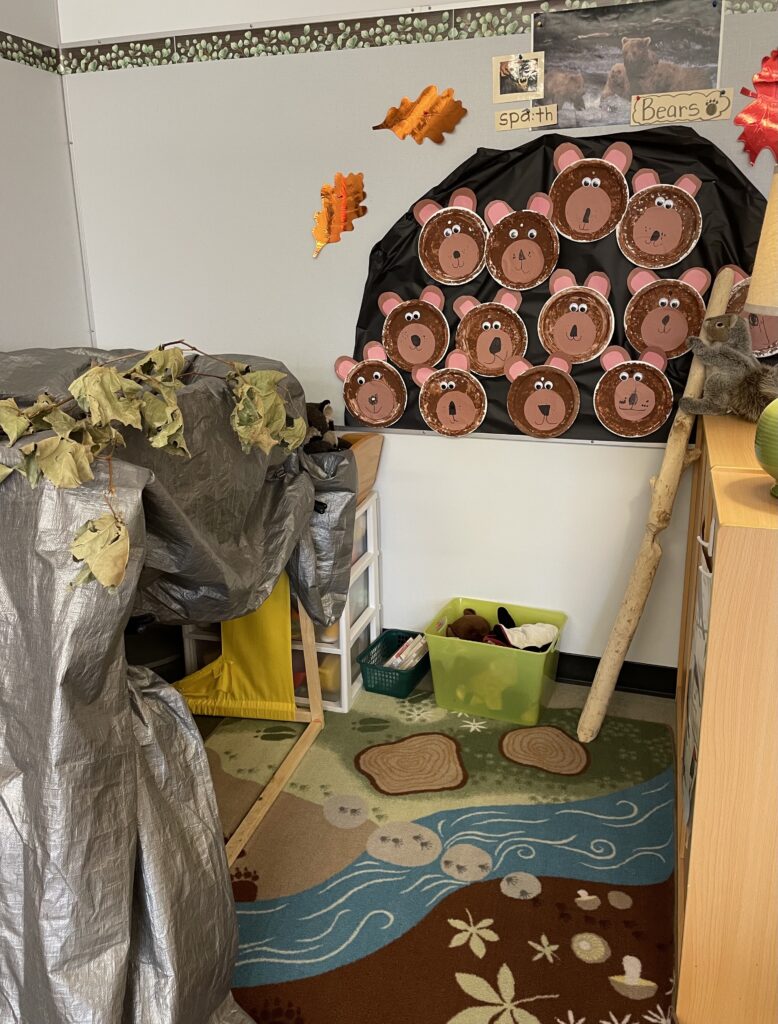Practicum Assessment Practices
April 3, 2022
I taught in a Grade 2 class for my practicum, and formative assessment was my best friend! I realized early on that if I asked closed-ended questions, the same three students would have their hands up every time, which was not an effective way to gauge if the entire class understood my lessons. It felt counterproductive to ask questions when only the same select few answered, so I changed my strategy. I used a lot of “thumbs up” or “thumbs down,” which seemed to work very well. For example, I did a lesson on alliteration, then read a story which contained alliteration throughout. I had students show me by using a “thumbs up” whenever they heard an example of alliteration. This strategy worked great because it showed me who was understanding, and kept students engaged throughout the reading, as they were very eager to give a “thumbs up!”
As I got to know my students better and studied their reactions – including verbal and nonverbal – I came up with better ways to use formative assessment effectively. There were a few students who I could look at once it was time to get started working, and I could tell by their body language that they were shutting down and needed some extra attention and support. I would have these students work with the classroom EA at the back table. They benefited from having the extra nudge from her to stay on task and seemed to thrive with the extra attention and support, which was encouraging.
My practicum teacher used a lot of discussions whenever she taught lessons. She did a great job asking open-ended questions, but I found that fewer students would answer than I would have expected. In my next practicum, I would like to try out drawing popsicle sticks (or using some other randomization with the students’ names) to encourage discussion from more classroom members. I know that I would need to establish a classroom culture that feels safe for students to take risks with their answers and not be afraid of making mistakes. Incorporating this method would require conversations to ensure that I let students know that making mistakes is a part of our learning journey and that it is okay and is a large part of how we learn.
In terms of summative assessment, I was asked by my coaching teacher not to do any. She wanted to handle that herself. So even though I did have math worksheets and different activities that the students did, and I would go over them to gauge the learning accumulated by students and inform my future instruction with them, it was not for “marks”. One of my most helpful assessments throughout the three-week practicum, especially for math, was using small, individual whiteboards. I would put questions onto the large whiteboard at the front of the class, and then students would put their answers on their mini-whiteboards, and I would let them know if they were correct or if they needed to try again. Sometimes, I would have them check with their partner next to them if they got the same answer, and if it was different, they had to explain how they got their answers and figure out which one was correct together.
Salmon Life Cycle Charades – aka The Flop
March 2, 2022
I had such high hopes for this lesson. My practicum teacher had asked me to create an interactive lesson for students to have fun with the stages of the life cycle of salmon. She had suggested some kind of interpretive dance, and we compromised with a game of charades. I created laminated cue cards of the key terms students learned over the last couple of weeks, such as “alevin” and “redd.” Students were put into pairs and given a definition to act out for their classmates to guess. I gathered numerous props (see below) for students to use to act out their definitions. I was so excited!
I explained how the game would work and had students go off and brainstorm with their partners how they wanted to act out their words. As I circulated the room, I noticed that students were very off task. When I asked what the problem was, many students either couldn’t read the word on their cue card or claimed they had no idea what their word meant. I tried to pass out the large posters that had the words and pictures associated with what it meant to give students a better idea of what stage or associated key term was. It became overwhelming because so many pairs of students were off task. I wasn’t sure if students were disengaged because they perceived the task as too difficult or just completely disinterested.
Regardless, I tried to stick with my lesson plan and had students reconvene at the carpet and act out their cards. Let’s just say it did not go as I had hoped. If I were to do this lesson again, I would have pictures on the cue cards, and I would give more explicit instructions and do more examples of what I expected students to do. For instance, I would have pulled a card out of the deck and then acted it out for students, using the props and posters.

The Power of Story
October 11, 2021
Over the last two weeks, we have covered a lot of information in EDUC 393: Foundations of Education, much of which has been new to me. Throughout the many topics we have explored, one, in particular, has really stood out. I have heard it brought up frequently as of late – the power of story. I knew previously that Indigenous people had oral traditions but didn’t fully understand the significance of their meaning and purpose. According to Chrona 2020, “Different stories have different purposes. Traditional and contemporary First Peoples stories are told for teaching, sharing creation stories, recording personal, family, and community histories, ‘mapping’ the geography and resources of an area, ensuring cultural continuity, healing and entertainment.” I had no idea there were so many uses for traditional stories, nor was I aware of the many cultural protocols surrounding the stories.
I am thankful we spoke about the protocols surrounding the narratives because I find myself very hesitant to teach about First Peoples traditions or stories as a white woman and descent of European settlers. I often question whether I have the right to teach about Indigenous culture. I worry about saying something and it not being culturally correct. The last thing I want is to offend or upset anyone by doing or saying the wrong thing. That being said, I do believe the traditional stories have so much to offer students and want to incorporate them into lessons respectfully and effectively. I am hopeful to be able to invite a local Elder or other community members to share stories to generate authentic and meaningful learning for the students.
In my own experience, I have found storytelling to be quite powerful. I remember when I shared a personal story of mine with a kindergarten class I was working in, and I was astounded at how captivated they were – listening intently to my story. Given they were a bit of a rowdy bunch, I was not expecting them to be so interested and engaged. I believe it was partly due to them being engaged in the story, but it was also a really good opportunity to build a connection. Once I finished, they all wanted to share similar stories with me, and it opened up the space for conversation and relationship building. Reflecting on this memory, I can see how vital relationship building and connection are for students and how storytelling can be an extremely effective way to convey information in a way that they see as meaningful and engaging.
As critical as storytelling is, the ability to listen, receive and retain the information is just as important. “As part of the oral tradition, listening skills are paramount to First People’s teaching and learning. Listening was and continues to be critical in traditional First People’s culture as the first step in committing something to memory” (Chrona et al., 2020). In one of the past classrooms I worked in we had the kids come up with a “sit spot” which was a relaxing place that they could go and feel connected to nature and feel calm, safe and happy. Part of the activity included us walking outside into the forest, finding a quiet spot to sit in silence with our eyes closed and trying to listen to every single noise we could hear. After a few minutes, the students were asked to describe their experience and explain what they noticed and how they felt. It was a neat exercise because many of the kids had never just sat in silence and focused on their surroundings using mainly their auditory senses. I didn’t think anything of the activity at the time, other than I thought it was neat that the teacher incorporated being in nature into the lesson. With more of a perspective now, I can see the value of that lesson. It was one of the most holistic lessons I had been a part of while working as an Education Assistant, and I can see now that it encompassed the First Peoples worldview of connection with the land and environment (Chrona et al., 2020).
References
Smith-Brillon, K., Hooper, D., Hunt, J., Smith, J., Hill, A., Chrona, J., Froste, H., McSpadden, N., Sutton, T., & Wood, H. (2020). In our own words: Bringing authentic first … – fnesc.ca. First Nations Education Steering Committee. Retrieved October 12, 2021, from http://www.fnesc.ca/wp/wp-content/uploads/2020/09/Unit-4-p103-104-BLM-from-PUBLICATION-K-3-In-Our-Own-Words-Revision-WEB-2020-08-20-2.pdf.
People, Place, and Land
September 21, 2021
Where I am
After spending the first twenty-six years of my life living in B.C.’s Lower Mainland, I find myself now – two years later – embracing a new adventure up north in Terrace. I am grateful for the opportunity to learn, live, and explore on the unceded traditional territory of the Tsimshian nation. When I think of Terrace, I think about vast ranges of snow-capped mountains and glacier-fed lakes and rivers. I think about bountiful wildlife populations and varied weather. It is a place offering something to do in every season if you enjoy the outdoors like me. If you’re going to let the rain and cold weather stop you from adventuring, Terrace is probably not the place for you. However, it is because of that rain that the forests are incredibly lush, and the rivers and streams are rich with fresh water and life of their own.
How I Came to Be Here
I moved to Terrace in January of 2020 to start a new adventure, nervous but very excited because I was on my own for the first time in my life. Terrace embodies many aspects of life that are important to me. It has a slower pace than city life and a smaller, more close-knit community where people are more inclined to care for and look out for each other. I love to explore and spend much of my free time outdoors in nature, either hiking or kayaking with my dog and partner. We are trying to build and maintain a sustainable lifestyle that allows us to live mostly off our own land. By growing fruits, vegetables, and herbs in a large garden, having chickens to provide eggs, beehives to pollinate the garden and fruit trees, and goats and rabbits to contribute to the composting system, we aim to allow everything to grow and thrive. The majority of the meat we consume is locally and ethically harvested through hunting. We also forage a wide range of mushrooms and berries. These opportunities exist because of where we are and are also why so many different First Nations are represented in the area and had thriving populations here before European contact.
Connection and Purpose
During my time spent working in the local school district, I made many meaningful connections with students – many of them who are Indigenous. They have taught me so much about their culture through sharing stories and via language and culture teachers who visit classrooms and teach us more about their culture. Since moving here, I have been very fascinated by the Nass Valley. Many of my students are Nisga’a, and I feel that it is vital for me to understand the culture of the students I work with and the wider community. I have visited there multiple times and written papers on the Nass Valley because I am intrigued by its rich culture and history. As a future teacher, I think it is imperative to inform myself of the culture of my students. In return, I hope to share my love for the outdoors and exploring in mindful ways with them.
Intention for e-Portfolio
February 13, 2022
The process of creating my e-portfolio feels similar to that of creating my LinkedIn profile during my years spent working in the business industry. I carefully selected accomplishments that I wanted to share with the digital world, including potential employers.
I intend to use my e-portfolio to document successful lessons and valuable resources for future use. I can see it being a helpful tool, allowing me to organize content in a way that is easily accessible to me when I want to reuse it in the future. I am okay with the platform being accessible to parents if they are interested in viewing some of the year’s highlights. I do not, however, anticipate having the time or energy to regularly genereate blog posts that would be up to the standard I would hold myself to in order to share with the public. There are other platforms (ie, FreshGrade or Remind) that could be used to communicate with parents that I would anticipate myself being more likely to use since they are more user-friendly and designed specifically for communication with parents as well as being very intuitive to use on mobile devices. An eportfolio, though, could be used to store a lot of lessons privately for my own convenience. I see it as something that I would use for my own benefit, or as a way of marketing myself, my skills and my values to potential employers.
Math Magic Trick
The Bear Den
When I started my second practicum in a Kindergarten class at Unsworth Elementary school in Chilliwack, the class had just started a science unit learning about how animals prepare for winter. This involved a lot of learning about bears. As the weeks went on, we did a lot of learning about how bears prepare themselves for hibernation.
I taught the class different ways to say “bear.” We learned that the halq’eméylem word for bear is “spá:th.” I also taught students the ASL word for bear. They made their own brown bears using paper plates and paint and put them outside of our bear den. Students were very excited about using the bear den, which was complete with pillows and twinkly lights on the inside. This was a highlight of my practicum.



